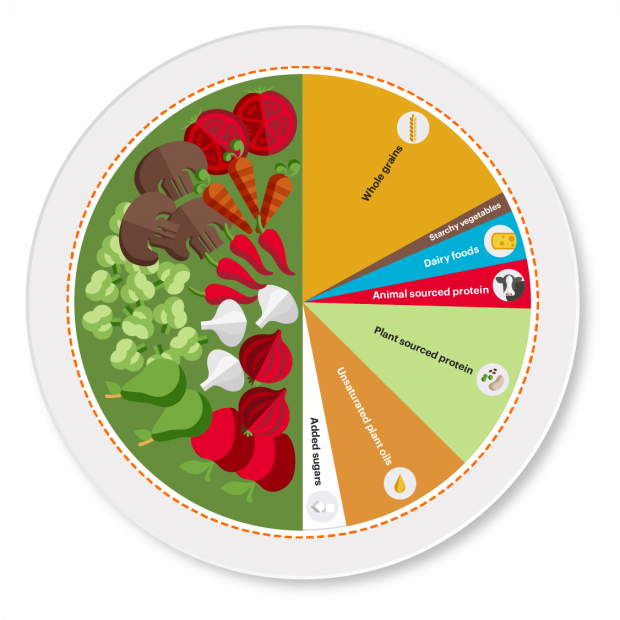How can we eat in a way that is healthy and good for the planet? The Planetary Health Diet aims to solve this growing challenge.
So many choices, but what is right for a healthy planet and healthy people?
We are bombarded with so many choices every day about what to eat. You can be forgiven for being confused. Now more than ever we are having to consider the impact the food we have has on our planet. What with climate change and the urgent need to cut down on CO2 emissions. Many of us are asking, should we buy organic or conventional? What about GMOs? Do we buy local and support local farmers instead of larger chains? All of this is enough to make anyone anxious.
So what is the best approach if you want to make a difference to the planet but also protect your own health?
The Planetary Health Diet
This diet is timely and simple. It goes beyond nutrition and treats health and the environment as a common agenda. The planetary health diet is flexible by providing guidelines to a range of different food groups that together constitute an optimal diet for human health and environmental sustainability. It emphasizes a plant-forward diet where whole grains, fruits, vegetables, nuts, and legumes comprise a greater proportion of foods consumed. Meat and dairy constitute important parts of the diet. However, they feature in significantly smaller proportions than whole grains, fruits, vegetables, nuts, and legumes.

EAT-Lancet Commission’s Planetary Health Diet Guidelines
In addition to the targets set within each section, the dietary targets also suggest that the average adult requires 2500 kcal per day. While this amount will vary based on age, gender, activity levels and health profiles, overconsumption is a waste of food with both health and environmental costs.
Science-Based
The EAT-Lancet Commission’s scientific targets for healthy diets allow for individuals to prepare and consume meals in the total amount, composition, and proportions that fit within the ranges of different food groups. The dietary pattern allows for flexible application of these criteria, with room to tailor foods and amounts to different preferences and contexts to reduce the risk of poor diets and environmental degradation.
Can we feed a future population of 10 billion people a healthy diet within planetary boundaries?
There are over 820 million people around the world who do not have enough to eat and many more who are malnourished. Lack of nourishment is also a key issue.
The EAT-Lancet Commission on Food, Planet, and Health recently brought together 37 world-leading scientists from across the globe to answer this question: Can we feed a future population of 10 billion people a healthy diet within planetary boundaries?
The bottom line
The answer is yes, but it will be impossible without transforming eating habits, improving food production, and reducing food waste.
Food is the single strongest lever to optimize human health and environmental sustainability on Earth.
Read the full report here: The EAT-Lancet report is the first full scientific review of what constitutes a healthy diet from a sustainable food system, and which actions can support and speed up food system transformation.
Every day this week Longevity will feature more insights on The Planet Healthy Diet so keep reading. Healthy Planet. Healthy People!





![women [longevity live]](https://longevitylive.com/wp-content/uploads/2020/01/photo-of-women-walking-down-the-street-1116984-100x100.jpg)









